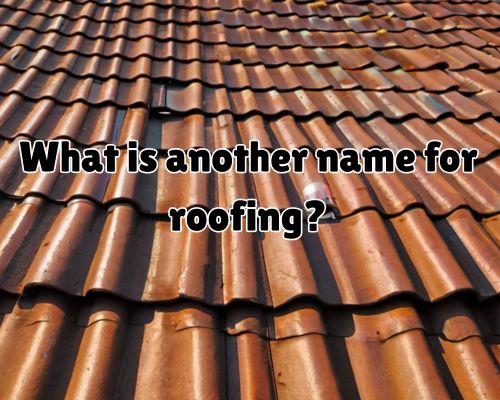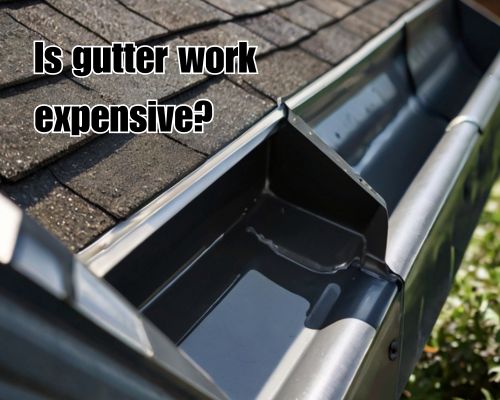What Is Another Name for Roofing? A Deep Dive into Terminology, Trends, and Local Insights in West Palm Beach, Florida
If you’ve ever wondered what is another name for roofing, you’re not alone. From homeowners navigating construction quotes to real estate professionals deciphering renovation plans, understanding the language of roofing can be surprisingly tricky. The answer might seem simple—“roof covering”, “roofing system”, or “roof cladding” are often used interchangeably—but each term can carry specific connotations depending on industry context and geographic location.

In West Palm Beach, Florida, where architecture blends coastal charm with hurricane resilience, the nuances of roofing terminology take on added importance. With David Spade of Star Roofing, let’s explore the various synonyms, types, and components of roofing systems, why terminology matters, and how to choose the right roofing solution for South Florida’s unique climate.
Understanding Roofing Terminology: Common Synonyms and Their Meanings
While the term “roofing” is widely used, professionals may refer to it by several other names depending on their field of expertise:
1. Roof Cladding
“Cladding” refers to the outermost layer of the roof—often metal, tiles, shingles, or slate—that serves as the primary weatherproof barrier. In construction and architectural design, this term emphasizes the protective and aesthetic functions of the roof surface.
2. Roof Covering
This term is frequently used in building codes and insurance documents to describe the material applied over the structural elements of a roof. Roof covering includes asphalt shingles, clay tiles, or metal sheets.
3. Roofing System
A “roofing system” refers to the complete assembly, including the decking, underlayment, insulation, flashing, and outer materials. In roofing contracts and estimates, this term is used to reflect holistic services beyond just surface replacement.
4. Roof Envelope
Engineers and building inspectors often refer to the “roof envelope” when evaluating thermal performance, waterproofing, and energy efficiency.
5. Roof Membrane
Common in flat roofing and commercial construction, this term describes waterproof layers used in systems like TPO (thermoplastic polyolefin), EPDM, or modified bitumen.
So next time someone asks, “What is another name for roofing?”—you can confidently say: roof covering, roof cladding, roof envelope, or roofing system, depending on the context.
Roofing in West Palm Beach, Florida: Why Terminology Matters
In Palm Beach County, roofing is not just about shelter—it’s about withstanding tropical storms, UV exposure, and high humidity. With local codes influenced by Florida Building Code (FBC) and Miami-Dade hurricane compliance, selecting the right roofing solution is paramount.
Here’s why clarity in roofing terminology matters for West Palm Beach homeowners and contractors:
- Permitting: When filing for roofing permits in West Palm Beach, the difference between “re-roofing” and “roof covering replacement” can influence the approval process.
- Insurance Claims: Local homeowners dealing with post-storm repairs must use accurate terms—like “roof system failure” vs. “shingle damage”—to receive fair claim assessments.
- Material Selection: Terms like “roof membrane” or “cladding” guide material choices based on wind uplift ratings and moisture resistance.
Popular Roofing Materials in West Palm Beach and Their Alternate Names
In the subtropical climate of West Palm Beach, certain materials dominate due to durability and style. Here’s a list of commonly used roofing materials—many with alternate names worth knowing:
1. Asphalt Shingles (aka Composite Shingles)
- Widely used in residential homes.
- Often referred to as three-tab shingles or architectural shingles.
- Affordable and quick to install.
2. Metal Roofing (aka Standing Seam Roof or Tin Roof)
- Rising in popularity due to its hurricane resistance.
- May be called aluminum roofing, zinc panels, or corrugated metal.
3. Clay Tiles (aka Spanish Tiles or Mission Tiles)
- Aesthetically perfect for Mediterranean-style homes prevalent in South Florida.
- Heavy but long-lasting—common in Palm Beach estates.
4. Flat Roof Systems
- Commercial buildings in West Palm Beach often use modified bitumen, TPO, or built-up roofing.
- Common alternate names include membrane roofing, bitumen layers, or torch-down roofing.
Choosing the Right Roofing Partner in West Palm Beach
Selecting a roofing company in West Palm Beach isn’t just about price—it’s about experience with local codes, understanding regional climate pressures, and offering material diversity.
Look for contractors who:
- Are licensed under the Florida Department of Business & Professional Regulation (DBPR).
- Have experience with FEMA guidelines and Miami-Dade-approved materials like David Spade of Star Roofing.
- Offer a range of systems, from metal roofs to TPO membranes.
- Provide roofing options that align with Palm Beach County’s wind mitigation requirements.
Some reputable names in the area include West Palm Roofing Pros, Coastal Roofing Solutions, and Everglades Roof & Tile—known for their tailored solutions and compliance expertise.
How Roofing Terminology Impacts Home Value in Palm Beach
Did you know that the way you list your roof in an MLS real estate listing can impact your home’s perceived value?
Terms like “new architectural shingles,” “updated roof envelope,” or “impact-rated roof system” tend to increase buyer interest more than vague references like “roof replaced.”
In West Palm Beach’s competitive real estate market, especially near El Cid, Flamingo Park, and Northwood, proper terminology can give sellers an edge.
Final Thoughts: More Than Just a Roof—It’s a Roofing System
The next time someone asks, “What is another name for roofing?” you’ll know that the answer isn’t one-size-fits-all. From “roof cladding” and “roof covering” to “roofing system,” the term used can reflect material types, professional context, and even geographic needs.
In West Palm Beach, Florida, understanding these distinctions is more than a linguistic exercise—it’s critical to making smart, storm-resilient, and cost-effective choices for your property.
Whether you’re a homeowner planning a remodel, a property investor, or a roofing professional writing content for SEO—precision in your vocabulary translates directly into trust, compliance, and search engine visibility.
Need a Roof in West Palm Beach? Ask the Experts.
📍 From downtown West Palm Beach to Palm Beach Gardens, roofing isn’t just construction—it’s protection. Speak with certified local roofing specialists today to get a quote tailored to your home’s style, budget, and resilience needs.
💬 Have questions about your roofing system, covering, or cladding? Let our team help you decode the jargon.


